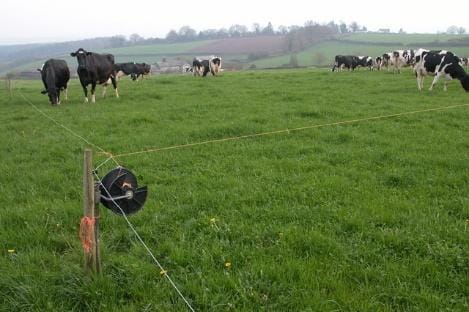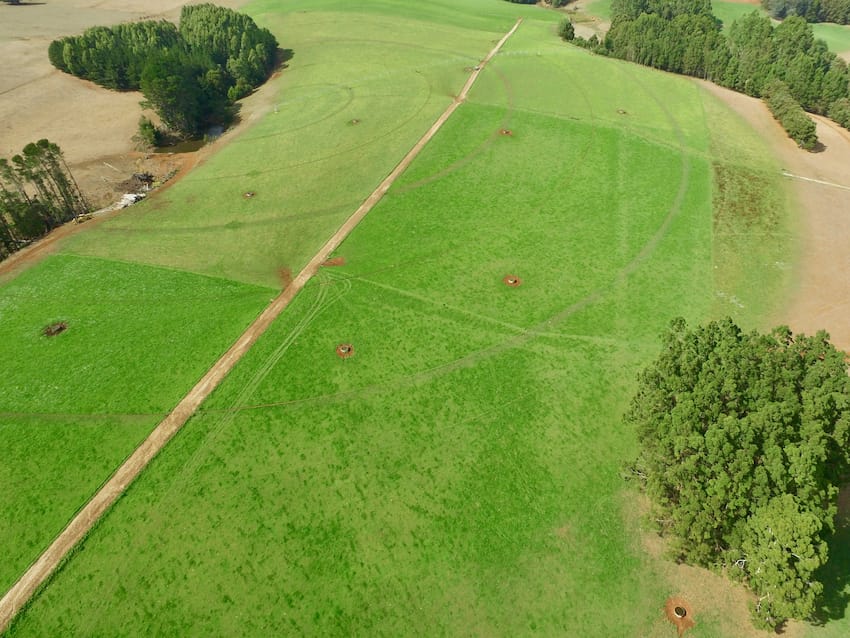As a farmer, you know that your pasture is a huge resource for you. Your grasslands help transform your ordinary herd into superhero animals that can produce milk, meat, and other products while providing you with a sustainable business to run, and security for life.
But, did you know that even today, pastures remain as a huge untapped resource for millions of farmers around the world?
Just take the case of the Midwest. More than 1/4th of the agricultural land in the Midwest is some form of pasture. But, a whopping 80% of that land suffers from poor fertility, major weed problems and poor soil health.
Why?
It’s all because of grazing.
In today’s article, we’re going to talk about rotational grazing vs. continuous grazing, why you need to make the switch immediately and how you can implement rotational grazing on your farm.
When cattle are set loose on the land, they tend to graze anywhere they want to if there’s no specific system in place. Since the forage is continuously attacked by the herd, it has no time to rest and recover. In continuous grazing systems, farmers simply cannot avoid selective grazing and its damages.
This is a pity because it’s almost like a child going wild at a grocery store without a parent to intervene and tell them that too much sugar isn’t good for them, and they have to have a go at fresh fruit and veggies too!
Enter rotational grazing, the best way to protect your paddocks, give your cattle the gift of great forage, keep your soil healthy and happy and poise your pasture for profit!
What is rotational grazing?
Rotational grazing is when the entire pasture is divided into portions of land called paddocks. Only one part of the pasture is grazed while the remaining area rests.
Livestock are ‘rotated’ or moved from one paddock to another paddock.
When a particular paddock is allowed to rest between rotations, it gives the plants a chance to renew their energy reserves, deepen their roots and also allows for maximum production.

Types of rotational grazing
Rotational grazing can be done in different ways. The number of paddocks can range from 2 to even 25 or more.
There are also more intensive rotational grazing practices based on herbage growth. This requires more management skills involved with a greater number of paddocks, shorter grazing periods and long rest periods. If done well, this will result in greater pasture yields, farm production and profits per hectare.
The advantages of intensive rotational grazing are many:
- Stable production even in times of natural disasters like drought
- Greater yield
- Higher quality of forage
- Lower problems of weed and soil erosion
- Soil fertility is uniform
Rotational grazing has many different names:
- Voisin grazing
- Hohenheim grazing
- Intensive grazing management
- Short duration grazing
- Savoury systems
- Strip grazing
- Controlled grazing
- High-intensity, low-frequency grazing
But we won’t go into that in detail now. If you’re interested to learn more about rotational grazing, check out our free guide on different grazing systems.
Instead, let’s discuss the practicalities of setting up a rotational grazing system.
Common Mistakes
Many times, rotational grazing just means shifting the animals from one paddock to another without any meaning behind it. Unfortunately, this is wrong and must not be done. Instead, the timing of the rotations must match the optimum growth stage of the forage.
The paddocks in the cycle must be chosen in response to the growth of the forage. Such rigid schedules reduce the benefit of rotational grazing.
Setting up a rotational grazing system
As always, the first step – to anything really, is to set a goal. Start with the end in mind.
Here are a few sample goals:
- Improving pastures
- Lowering feed cost
- Extending grazing season
- Improve the water holding capacity
- Better productivity
- Better profits
So now that you have the answers to the above questions, and your goals are in place, let’s set about taking the right steps to set up rotational grazing on your farm.
You can start by using one division fence and subdividing the land into paddocks using a mix of permanent and temporary fencing. If you find that rotational grazing is working for you, and you want to continue the practice, you can subdivide the land into even more paddocks using portable fences.
Paddocks
There is no golden rule as to how many paddocks you must divide your land into. Truth be told, any number of paddocks is far better than continuously grazing on one pasture!
In the beginning, your paddock sizes and numbers will be influenced by the fences you already have on your grasslands, the topography of the land, access to water and access to a central collection yard. So, to start with, you’ll probably find yourself dividing your land into anywhere between 2 – 8 paddocks.
Once you have this routine down cold, you can think about slowly shifting to an intensive grazing system. Here, you can let your length of grazing and rest periods determine just how many paddocks would be optimal.
When you have a lot more paddocks on your pasture, the rest time for the plants is more, and the length of time an area is grazed decreases.
Which is great for both your cattle and your land! Your paddock numbers don’t have to be set in stone – you can use portable electric wires to change both the area and number of paddocks depending on what works for you. But remember, the more number of paddocks you have, the more benefits your pastures will reap.

Let’s do some math
For those of you who believe that the proof is in the numbers, I’m going to give you a foolproof formula to calculate the ideal number of paddocks that you can divide your land into, by using just three variables:
1. The length of your longest rest period (also known as the slowest phase of your grass growth)
2. The number of grazing periods and
3. The number of mobs that will graze one pasture together at one time.
Here’s the equation:
rest period / number of grazings + number of animal groups
For example, let’s take a pasture that needs a 30 day rest period and has a 2 day grazing periods, and the grassland is grazed by one herd or animal group.
So that’s 30 divided by 2 which is 15 + 1 that equals 16 paddocks.
I know what you’re thinking now. Yes, this rest period will change depending on the season, rainfall, irrigation, your pasture species and its growth rate. That’s correct.
And that’s why you need to frequently measure your pasture growth rates and adjust your rotational grazing plans accordingly.
To plan the size of each paddock, divide the total size of pasture you require by the number of paddocks. Figure out how much land is unusable as pasture – if it's on a steep slope, is very rocky, etc.
Remember that your paddocks should be:
- large enough so that enough high-quality grass is available for each animal
- you can do this by calculating the daily forage intake and then fencing off just the right amount of land to create a paddock that will fulfil your animals’ dietary needs

When you’re fencing your paddocks, factor in the following:
Topography
- Different slopes must be separated into different paddocks
- In case of a slope, lay your paddocks across the slope instead of from top to bottom because your pasture growth will differ at the top of the hill and the bottom of the hill
- Hills and valleys should be fenced separately from slopes. This is because animals prefer to graze the level ground and they will end up grazing flat land more heavily than sloped land even if both are part of one paddock.
Forage
- Different species of forage will grow at unique time periods.
- Grazing a particular forage at a certain time of the year may not be good for that particular species. Similar to how we don’t graze legumes between Sep 1 – Oct 15.
Soil
- Different soils have different characteristics. Paddocks with good soils can be grazed more often than those without. So, separate your paddocks according to the soils.
Shade & water
- Shady areas and sunny areas must be fenced separately. This is because your cattle will prefer to graze in the areas that are bright and sunny, and leave their manure or take a quick nap in the shady area!
- Allow for easy access to water in all paddocks.
That brings us to the end of this article. I hope it was useful. You might like to check out our building repository of information on grazing systems.
I also wanted to talk to you a little about Pasture.io. If you’re tired of spending time, effort, money to measure your pasture growth and want to level up – you might be interested in what we have to offer.
We automatically measure your pasture growth and how this changes based on your weather, irrigation, fertilization and grazing plans. Even more importantly, we give you all this information in a jiffy, right on your smartphone or computer – to help you make more effective farm decisions.
Until we meet again, Happy Farming!
- The Dedicated Team of Pasture.io, 2020-10-07